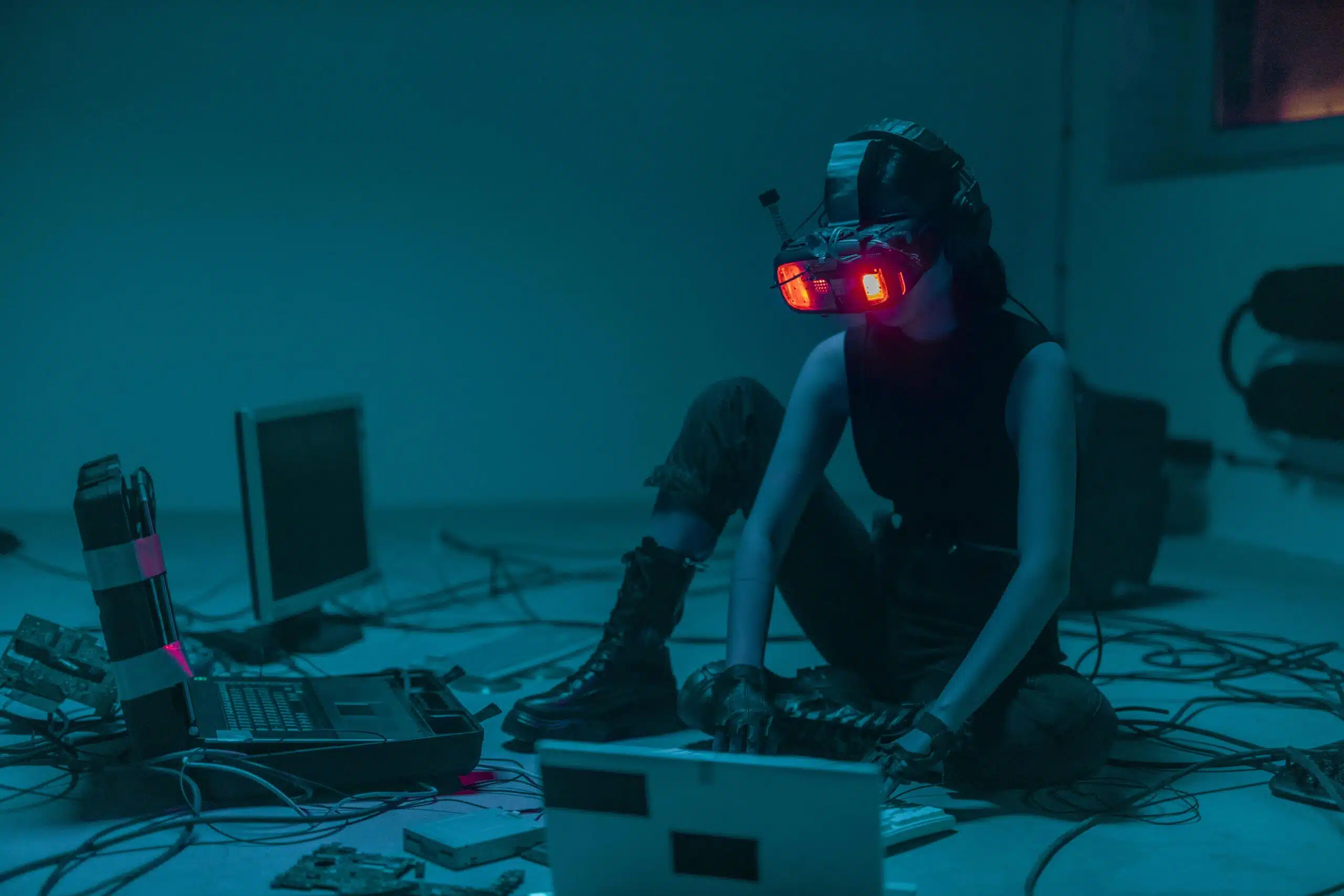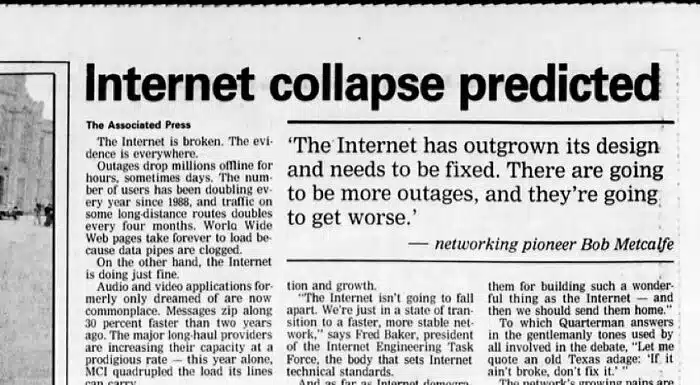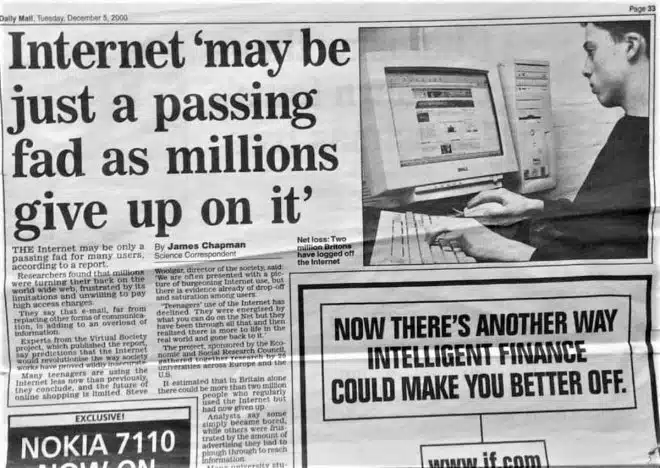
Why a Dystopian Future Could Happen: The Death of the Middle Class
By Hadi Brenjekjy
We have all been watching the world change at an astonishing rate, especially after the forth industrial revolution. The rise of AI and automation has led to never done or known before innovation, but it is also creating a society that seems to be splitting in two. One that is embracing what is happening and another that is against the change.
This could lead to the world ending up with only two groups: the privileged few who control and benefit from AI, IoT, and biotechnology and the many who are left struggling outside the system.
The divide is already forming. Those with access to digital skills and AI literacy are securing high-paying roles, while those without are watching their jobs disappear. I dont mean it is just about automation replacing workers from customer service reps and sales executive, it is about entire industries shifting towards AI-driven decision-making, leaving behind those who haven’t had the opportunity to adapt.
So How Do I See The Future?
The AI Divide: Insiders vs. Outsiders

Technology has always shaped the economy, but AI is different. It is not just changing how we work, it is changing who gets to work. If we don’t act now, the world could soon be divided into two extremes:
The “Insiders” – People who have the skills to work alongside AI, use automation, and benifit from a tech-driven economy. These individuals will enjoy financial security, influence, and continuous opportunities.
The “Outsiders” – Those whose jobs have been replaced or devalued by AI, lacking the necessary training to compete. Without intervention, many will face long-term unemployment, economic instability, and social marginalization.
The collapse of the middle class is the natural consequence of this growing divide. When technology concentrates wealth and opportunity in the hands of a select few, economic disparity deepens, social mobility collapses, and societal tension rises.
Drawing from history provides valuable lessons on how shifts force society to adapt. Let me share my perspective on how past industrial revolutions parallel today’s technological changes, particularly the rise of AI and automation, and how they necessitate adaptation.
Industrial Revolutions throughout history
First Industrial Revolution (late 18th to mid-19th century)
When I think back to the late 1700s, the invention of the steam engine and mechanization of textile production truly transformed society. Before this revolution, most people worked in agriculture or as artisans. But suddenly, there was a shift towards factory-based work. I imagine the fear and uncertainty that must have gripped families as they left rural homes for bustling towns and cities, facing arduous conditions in noisy factories.
A solid example is the Luddites, skilled textile workers who protested against machines that replaced their jobs. Their struggle was and still often mischaracterized as a resistance to technology itself, it was really about maintaining their livelihoods in changing times.
Second Industrial Revolution (late 19th to early 20th century)
Fast forward to the late 1800s, and we see a world changing with the invention of electricity and mass production techniques. Henry Ford’s introduction of the assembly line in the automobile industry is a classic case here. I think about how this not only revolutionized the manufacturing sector but also brought about significant changes in lifestyle, cars became accessible, changing how we travel and do business.
Initially, many workers feared job loss due to increased efficiency. However, new industries and roles eventually emerged, highlighting how adaptation and reskilling generated growth and opportunity.
Information Age and the Third Industrial Revolution (mid-20th century)
Looking to the mid-20th century, the rise of computers and telecommunications once again transformed the global economy. I draw parallels to the rapid advancement and digitalization of today. Personal computing and the internet changed everything about business, education, and communication.
The internet faced a lot of skepticism and even resistance. Many businesses and governments were wary of it, viewing it as unreliable, insecure, or even a passing fad. Some executives dismissed it, believing traditional models would always reign supreme.

In the early days, many people and institutions resisted the internet for various reasons, some out of fear, others due to different interests. Here are some key objections and how they tried to attack it:
1. The Internet Was Seen as a Fad
- Critics in the 1990s and early 2000s thought the internet was just a novelty. Business leaders like Microsoft’s CEO Steve Ballmer famously dismissed the iPhone and underestimated mobile internet.
- How They Attacked It: Many executives avoided investing in digital infrastructure, downplaying the need for websites, e-commerce, and online services. Some newspapers refused to create online editions, believing print would always dominate.
2. The Internet Was Considered Dangerous
- Governments and law enforcement were concerned about cybercrime, hacking, and illegal activities.
- How They Attacked It:
-
- Heavy censorship—China, for example, created the “Great Firewall” to restrict internet freedom.
- Politicians and media ran fear campaigns about online predators, fraud, and misinformation.
- Some businesses banned employee internet use, fearing lost productivity.
3. The Internet Threatened Established Industries
- The music, movie, and publishing industries saw the internet as a threat to their traditional revenue models.
- How They Attacked It:
-
- The music industry sued Napster and other file-sharing platforms instead of embracing digital sales.
- Publishers resisted e-books, arguing they would kill physical book sales.
- Hollywood fought streaming services.
4. The Internet Was Thought to Harm Social Skills
- Critics argued that being online would make people antisocial and ruin real-life communication.
- How They Attacked It:
-
- Some psychologists and educators warned against “internet addiction.”
- Schools restricted internet access, fearing distractions.
- Parents were advised to limit screen time before understanding its educational potential.
5. The Internet Was Dismissed as Unreliable
- Before Wikipedia and reputable sources were online, many saw the internet as full of misinformation.
- How They Attacked It:
- Academics and journalists dismissed online research as untrustworthy.
- Many schools and universities banned students from citing websites in research.

In the 1990s, when e-commerce was emerging, people were hesitant to enter credit card details online. Security concerns, lack of regulation, and unfamiliarity made online transactions seem risky. Even major retailers doubted that online shopping would ever replace brick-and-mortar stores, until companies like Amazon and eBay proved otherwise.
Similarly, IBM, once known for its dominance in mainframe computers, had to change dramatically. Initially, it underestimated the personal computing revolution, allowing Microsoft and Intel to dominate that space. But by the late ’90s and early 2000s, IBM successfully transformed into a services and consulting powerhouse, selling off its hardware business and focusing on cloud computing and AI.
The Fourth Industrial Revolution (21st century and beyond)
Today, we are witnessing the fourth industrial revolution, driven by AI, IoT, and biotechnology. The parallels to history are clear to me: massive shifts require agility and learning. The profound impact of AI on industries calls for significant reskilling (much like past revolutions) necessitated shifts in labor markets.
Take, for example, how AI is automating roles in logistics and customer service. We face a choice of investing in reskilling programs today to ensure workers are equipped for new roles or risk a widening economic divide.
Can We Stop The Collapse of the Middle Class?
The good news is that I don’t think we are doomed to this fate and I strongly believe that there are things we can do to avoid a dystopian future. To drive a car, you need to get a driving license, SO WHAT ABOUT AI?
1. Preparing for AI-Resilient Jobs
We can’t stop automation, but we can prepare for it. How? By learning data literacy, AI ethics, cybersecurity, and automation management, we can remain competitive and transition into roles that require human-AI collaboration.
2. Expanding Access to Digital Training
Right now, access to digital education is uneven. Governments and companies need to invest in widespread training initiatives and offer affordable or free programs that teach AI literacy, coding, and digital problem-solving.
3. Human-AI Collaboration Over Replacement
Instead of treating AI as the enemy, we must teach people how to (work with AI) maybe through prompt engineering, AI-assisted creativity, and/or automated business processes. Those who master these skills will always stay ahead.
4. Corporate & Government Responsibility
The private sector and policymakers must step up by supporting workforce adaptation programs. This means funding reskilling initiatives, updating outdated education systems, and ensuring AI development aligns with public interest rather than just corporate profit.
5. Lifelong Learning as the New Normal
Modern life is busier than ever. People juggle work, personal responsibilities, and constant digital distractions, leaving little time for traditional education. That is why the key to continuous learning IS NOT lengthy courses, it is microlearning and bite-sized training programs that fit into our fast-paced lives.
This is exactly why I’m passionate about London Intercultural Academy (LIA) where flexible learning is delivered through effective micro, bite-sized programs that encourage individuals to develop future-proof skills without disrupting their daily routines. Integrating short, impactful lessons into everyday schedules will make it easier for professionals to stay competitive and relevant in the AI-driven world.
Technology will continue evolving, and so must we. A culture of lifelong learning, where employees are continuously developing new skills, must become the new norm to ensure economic resilience.
A Crossroads: Choose to Act or Be Left Behind
We are at a turning point. If we ignore the impact of AI and automation, the middle class could disappear, we need to create a world where power and opportunity are not concentrated in the hands of a few. If we invest in digital upskilling, we can ensure that AI enhances human potential rather than exacerbating inequality.
The question is, are we willing to make that investment?
Hadi Brenjekjy – https://www.linkedin.com/in/hadibren/
